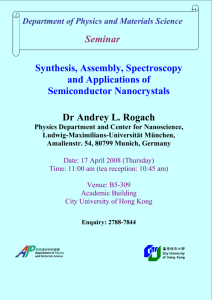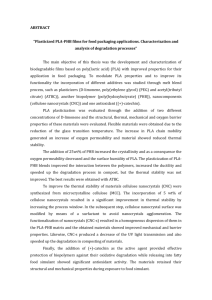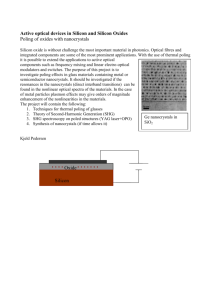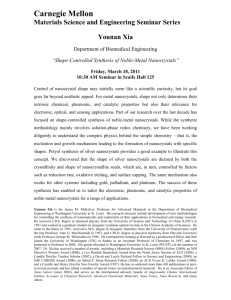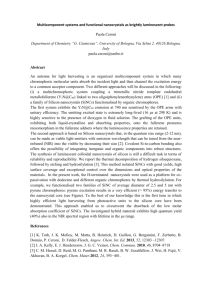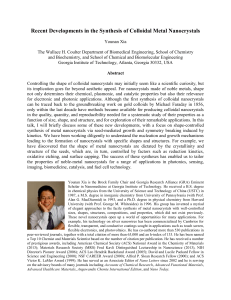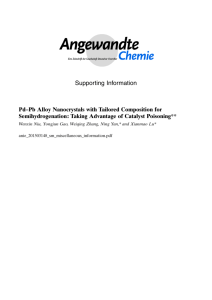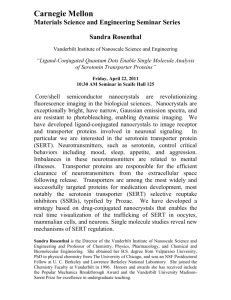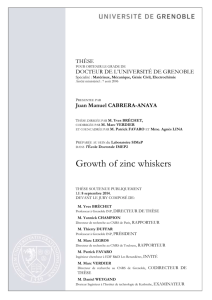Processing of Polymer Nanocomposites reinforced with
advertisement
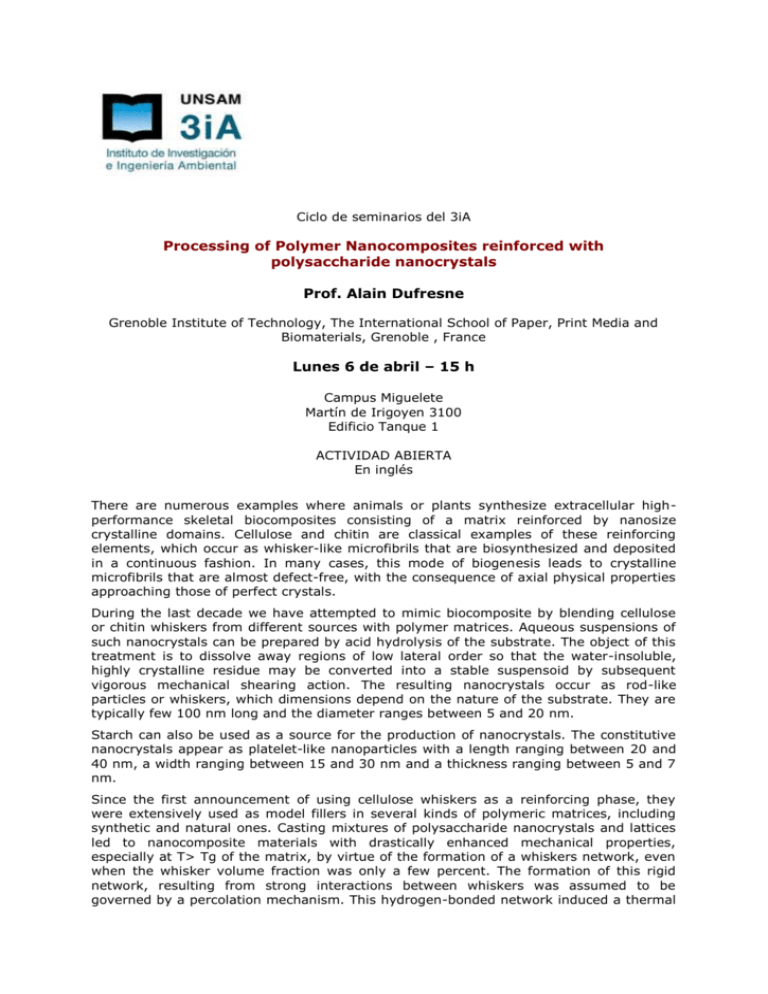
Ciclo de seminarios del 3iA Processing of Polymer Nanocomposites reinforced with polysaccharide nanocrystals Prof. Alain Dufresne Grenoble Institute of Technology, The International School of Paper, Print Media and Biomaterials, Grenoble , France Lunes 6 de abril – 15 h Campus Miguelete Martín de Irigoyen 3100 Edificio Tanque 1 ACTIVIDAD ABIERTA En inglés There are numerous examples where animals or plants synthesize extracellular highperformance skeletal biocomposites consisting of a matrix reinforced by nanosize crystalline domains. Cellulose and chitin are classical examples of these reinforcing elements, which occur as whisker-like microfibrils that are biosynthesized and deposited in a continuous fashion. In many cases, this mode of biogenesis leads to crystalline microfibrils that are almost defect-free, with the consequence of axial physical properties approaching those of perfect crystals. During the last decade we have attempted to mimic biocomposite by blending cellulose or chitin whiskers from different sources with polymer matrices. Aqueous suspensions of such nanocrystals can be prepared by acid hydrolysis of the substrate. The object of this treatment is to dissolve away regions of low lateral order so that the water-insoluble, highly crystalline residue may be converted into a stable suspensoid by subsequent vigorous mechanical shearing action. The resulting nanocrystals occur as rod-like particles or whiskers, which dimensions depend on the nature of the substrate. They are typically few 100 nm long and the diameter ranges between 5 and 20 nm. Starch can also be used as a source for the production of nanocrystals. The constitutive nanocrystals appear as platelet-like nanoparticles with a length ranging between 20 and 40 nm, a width ranging between 15 and 30 nm and a thickness ranging between 5 and 7 nm. Since the first announcement of using cellulose whiskers as a reinforcing phase, they were extensively used as model fillers in several kinds of polymeric matrices, including synthetic and natural ones. Casting mixtures of polysaccharide nanocrystals and lattices led to nanocomposite materials with drastically enhanced mechanical properties, especially at T> Tg of the matrix, by virtue of the formation of a whiskers network, even when the whisker volume fraction was only a few percent. The formation of this rigid network, resulting from strong interactions between whiskers was assumed to be governed by a percolation mechanism. This hydrogen-bonded network induced a thermal stabilization of the composite up to 500 K, the temperature at which polysaccharides start to decompose. Any factors that perturb the formation of this percolating network directly affect the reinforcing effect of polysaccharide nanocrystals. In addition to some practical applications, the study of these nanocomposite materials can help to understand some physical properties as geometric and mechanical percolation effect.



